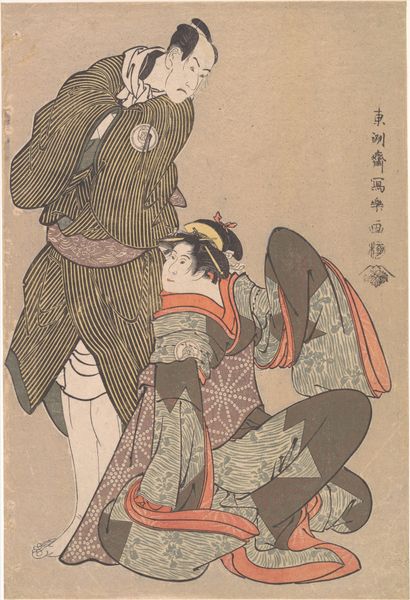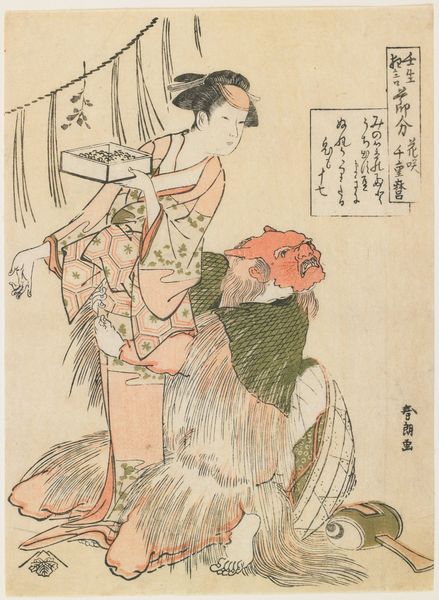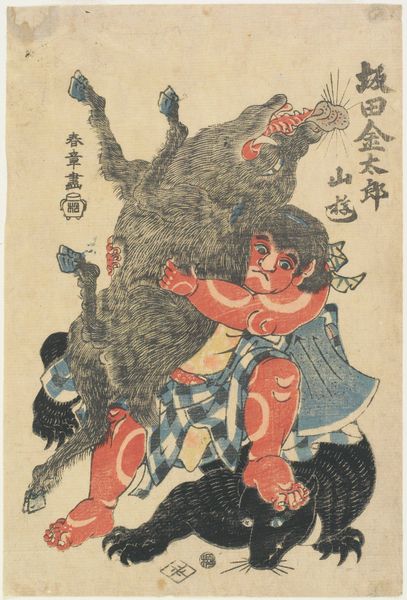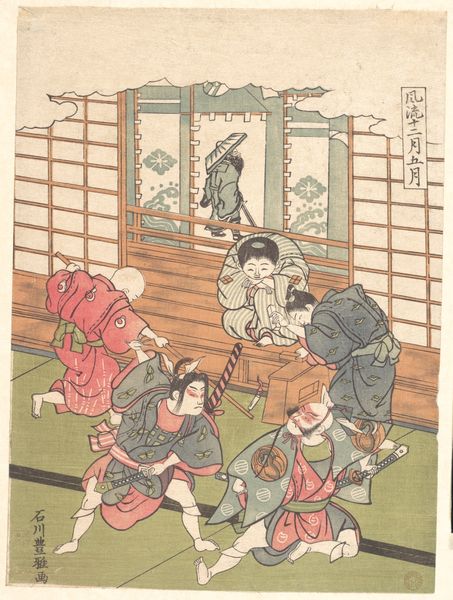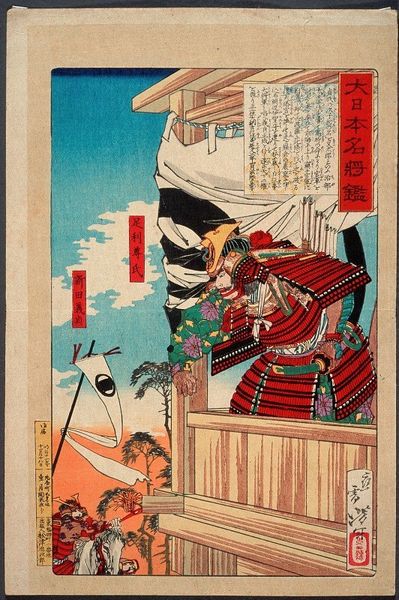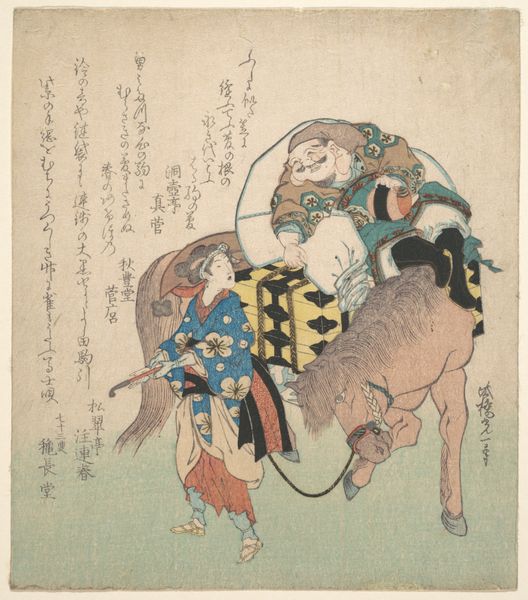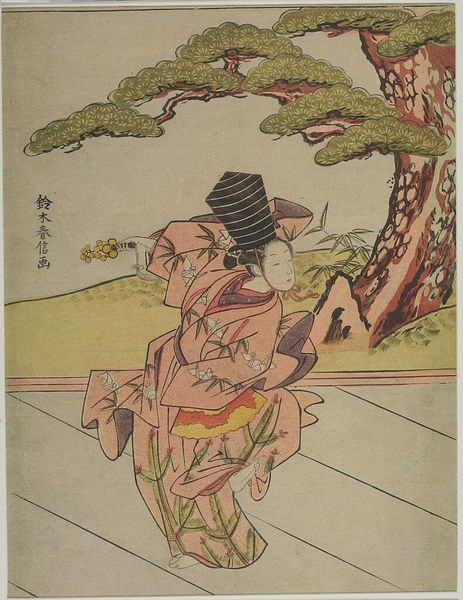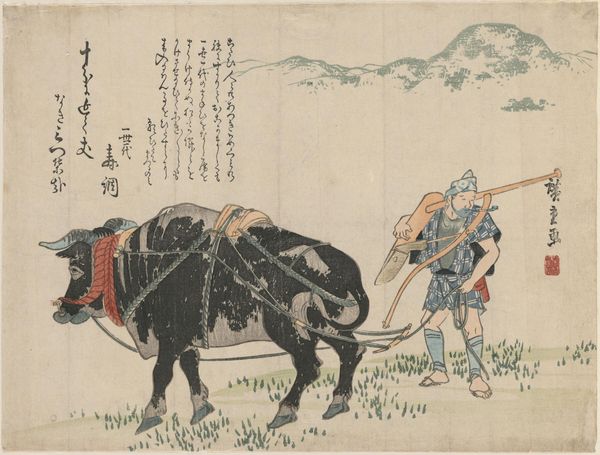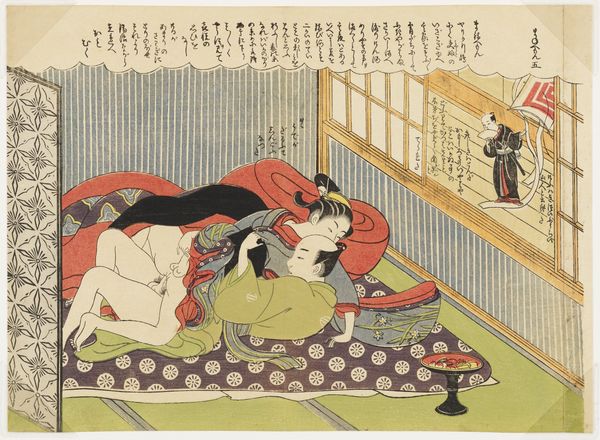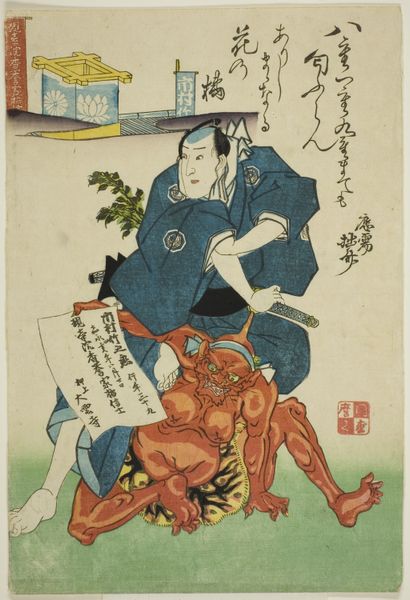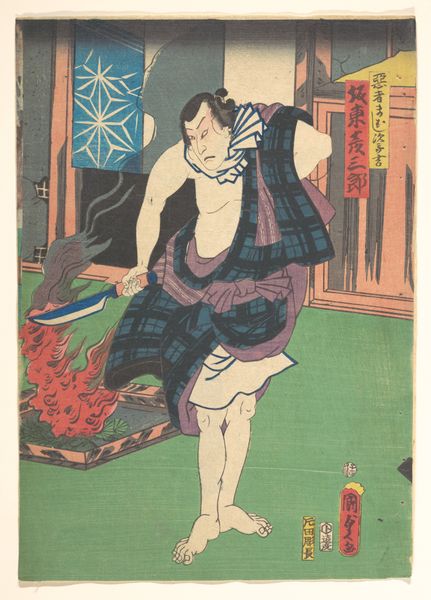
# print
#
asian-art
#
landscape
#
ukiyo-e
Dimensions: Image: 14 3/4 × 10 3/16 in. (37.5 × 25.9 cm)
Copyright: Public Domain
Editor: This is "View of the Large Imported Elephant," a print from 1863 by Taguchi Yoshimori. It strikes me as quite peculiar – almost dreamlike in its staging, a monumental elephant next to a man who looks like he's consulting notes or perhaps offering payment. What do you make of it? Curator: This print offers a fascinating glimpse into Japan’s engagement with the world during the late Edo period. The elephant, a symbol of exoticism and foreign trade, arrives in Japan alongside increased Western influence and social upheaval. How does the artist present this encounter, and what cultural negotiations are taking place? Consider, the elephant's imposing size contrasts sharply with the man, maybe depicting the disruption of traditional hierarchies. Does this representation reflect anxieties or perhaps an embrace of global exchange? Editor: It’s interesting how you connect it to global exchange. I see it now; the elephant isn't just an animal but a symbol. Curator: Exactly! Think about what it meant to transport such a creature. The labour involved, the exploitation of resources... are these invisible histories present, too? Ukiyo-e prints weren't merely beautiful depictions; they also communicated underlying socio-political messages, documenting as well as subtly commenting on these huge social shifts. What do you feel that the man's placement signifies? Editor: Now that you mention it, it feels like he’s negotiating terms on behalf of the Japanese people with a powerful entity! I originally perceived the work to just be showing off how interesting this "imported elephant" was. Curator: Precisely. Context illuminates so much, transforming the image from a simple illustration to a statement about Japan's complex negotiation with an increasingly globalized world. Editor: It gives me a completely different perspective. Thanks so much for the insight! Curator: My pleasure. Hopefully, that gives all of us a better appreciation for the context.
Comments
No comments
Be the first to comment and join the conversation on the ultimate creative platform.
